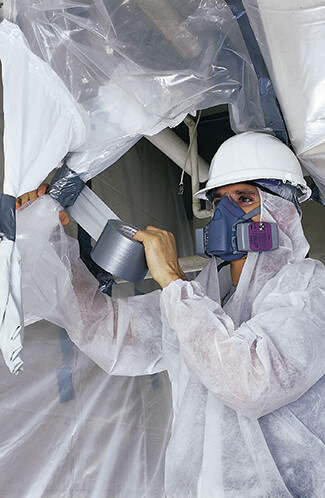Tips to Improve Silica Compliance

The Occupational Safety and Health Administration (OSHA) already is enforcing a silica rule revision for general, construction, and maritime industries. Now the agency is calling for uniformity in inspection and enforcement procedures. However, the oil and gas industry still has until June 23, 2021, to comply.
The silica standard cuts permissible exposure limits and controls how employees conduct work when it involves silica, outside as well as indoors. OSHA's rule helps limit worker exposure to particles, or respirable crystalline silica dust, which can lead to serious lung damage and even death. The new directive also helps guide how workplaces can meet silica compliance requirements.
Silica Hazards
The known dangers of silica are not a recent discovery. In the 1930s Hawks Nest Tunnel disaster, at least 476 workers exposed to silica died from silicosis. Particles of sand, rock, and minerals released into the air during tasks such as cutting, grinding or drilling, potentially exposing 2.3 million workers to silica, according to OSHA. An analysis of the National Institute of Occupational Safety and Health data and statistics from the Center for Disease Control and Prevention show an average of 100 deaths from silicosis per year.
 When OSHA began in 1970, the original rule included vague exposure protocols for silica. In 2016, the Dept. of Labor passed the revised standard to control how people work with silica. Since November 2017, OSHA says there have been at least 116 silica violations by the U.S. construction industry. Most recently, a business in New York was cited for exposing workers to silica and asbestos during renovation work on a storage facility.
When OSHA began in 1970, the original rule included vague exposure protocols for silica. In 2016, the Dept. of Labor passed the revised standard to control how people work with silica. Since November 2017, OSHA says there have been at least 116 silica violations by the U.S. construction industry. Most recently, a business in New York was cited for exposing workers to silica and asbestos during renovation work on a storage facility.
"Employers must monitor the work area for the presence of these highly hazardous substances, and put in place effective controls to protect employees from exposure," said Michael Scime, OSHA Buffalo Area Office Director, in response to the silica rule violation.
Here are the effective controls OSHA's silica regulation requires:
- Employers must conduct an exposure assessment
- Employers must have an exposure control plan
- Employers must establish engineering and work practice controls using OSHA's specified control methods or legitimate alternative exposure control methods
- Silica housekeeping must be continuous
- Keep a record of air testing results and risk management procedures
- Regulate work areas and use proper respiratory protection (PPE)
- Host routine education and training on silica
- Provide medical surveillance
- Communicate hazards
Dust Control Measures
Employers can take more effective steps to protect workers from exposure to respirable silica dust. The most common method of limiting silica exposure is to use water or dust collection systems to mitigate airborne particles.
When installing engineering controls to reduce silica concentration in the air, ensure workers understand work area operation rules and requirements by using signs and labels. Convey boundaries of silica work areas, cordon off access areas that have restrictions, and reinforce visual aids with floor marking. Respirators are to be in use to protect employees when other control methods do not limit silica dust exposure enough.
Ensure PPE areas are in order and tidy. Local fire departments can often assist in training workers on proper face coverings and breathing apparatus use. Using these tips and OSHA best practices, employers can not only protect the environment, but also the well-being of their workers and overall business.
Need help making OSHA-compliant signs and labels? Start right away using our free OSHA Safety Signs guide.
Related Resources
Small Business Gets Big Safety Program Assistance
OSHA and NIOSH are stepping up efforts to help small businesses improve safety through a new handbook and ...
Read
Breathe Easier with OSHA Respiratory Protection Labels for Workers
How Can Jobsite Labeling Improve Compliance with Respiratory Protection Standards? Construction work creates ...
Read
Occupational Exposure
The term "occupational exposure" refers to a potentially harmful exposure to hazards chemicals in the ...
Read.png)





